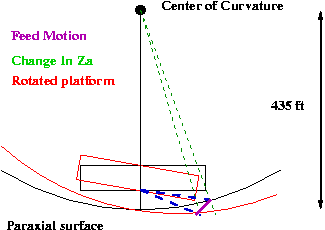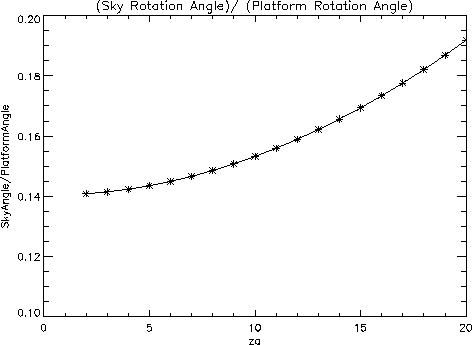Converting platform rotation to rotation on the sky
apr07
The platform can be rotated by pulling on the tie downs or
redistributing weight on the platform. The picture below shows the
different parts of this
rotation:

- The rectangle is the platform. The arc is the paraxial surface
- The black lines are before the rotation, the red lines are after
the rotation.
- The rotation is about the bottom of the platform where the main
cables attach.
- The blue dashed lines go from the center of rotation to the horn
(sitting on the paraxial surface). The horn rotates through the same
angle
as the platform.
- The green dashed lines go from the center of curvature of the
reflector to the horn. This is about 435 feet.
- The center of rotation of the platform is about 61 feet above the
paraxial surface.
- The purple line is the path the horn moves during the platform
rotation.
The distance the horn moves increases as the zenith
angle increases. The
sky angle is the purple distance divided by 435 feet. The platform
angle is the distance divided by the blue line. The sky rotation will
be about 6 times smaller than the platform rotation because of the
ratio of the distances.
The picture below shows the ratio of
SkyRotationAngle/PlatFormRotationAngle as a function of zenith angle:

The ratio changes because the distance from the center of rotation of
the platform to the horn changes with za.
The idl routine platrotosky
will compute the positions of the horn as the platform rotates as well
as the rotation angle on the sky.
processing: x101/070114/cmptilt.pro
See Also: the idl routine pnt platrotosky
home_~phil

